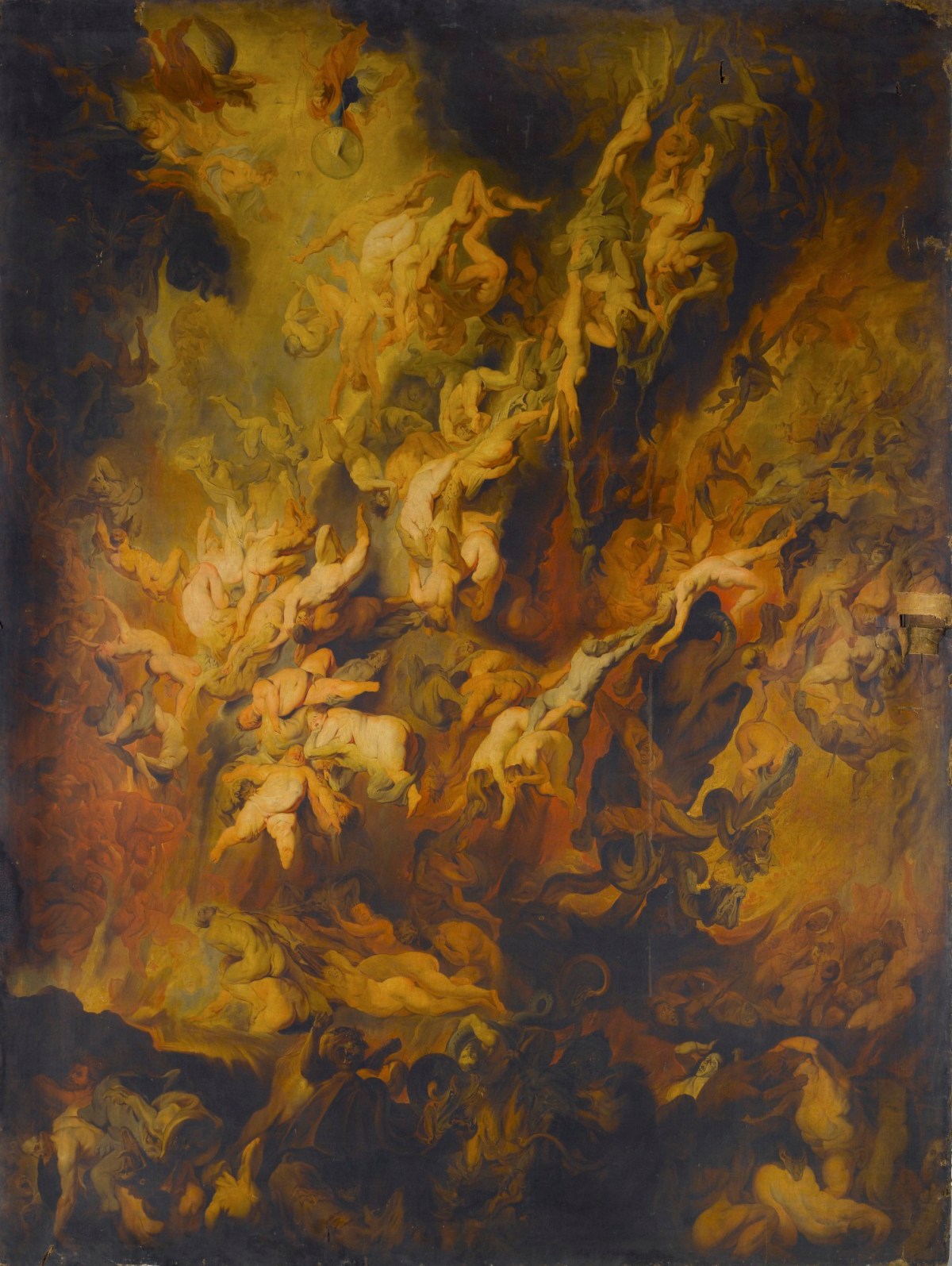
Guy Head, The Fall of the Damned, before 1799.
Oil on canvas. 2885 mm x 2155 mm x 28 mm. © Photo: Royal Academy of Arts, London.
This image is not available to download. To licence this image for commercial purposes, contact our Picture Library at picturelibrary@royalacademy.org.uk
The Fall of the Damned, before 1799
Attributed to Guy Head (04 Jun 1762 - 1800)
RA Collection: Art
Guy Head (1762-1800) was born in Carlisle and entered the Royal Academy Schools in 1778, where he exhibited annually from 1779. That year he travelled to Europe, becoming a member of the Florence Accademia in 1787, of the Kassel Akademie in 1788 and of the Accademia di S Luca in 1792. He then specialised in history painting derived from the contemporary Roman Neo-classical style. In 1799 he returned to England, where he painted several commissions for Augustus Frederick, Duke of Sussex, and William Frederick, 2nd Duke of Gloucester. He also painted several portraits.
The present painting is a copy after Rubens' famous composition The Fall of the Damned, (Alte Pinakothek, Munich) executed ca. 1620. This monochrome painting, enlivened by shades of reddish brown, ochre and greyish blue, shows a tangle of twisted bodies and demons precipitating into the darkness while an armed archangel holding a round shield emerges from a halo of bright light on the top left corner. This event is part of God's final judgement when at the end of all times, Christ will return to redeem the righteous souls and punish the damned ones. This doctrine draws from many passages from the apocalyptic sections of the Bible, notably in Matthew 13:40-43:
'Just as the weeds are collected and burned up with fire, so will it be at the end of the age. The Son of Man will send his angels, and they will collect out of his kingdom all causes of sin and all evildoers, and they will throw them into the furnace of fire, where there will be weeping and gnashing of teeth. Then the righteous will shine like the sun in the kingdom of their Father.'
Rubens in depicting the fall of the doomed humanity re-interpreted some earlier great models such as Michelangelo's Last Judgement achieved in 1541 in the Sistine Chapel. His monochrome palette and the emphasis on movement are however reminiscent of some late Tintoretto's paintings. Rubens also executed five related drawings (British Museum, London, PD Oo.3-9) probably executed after the painting was completed, perhaps intended as models for engravings, a practice which he carried out for a number of his major works, such as The 'Coup de Lance'. However, no such engravings were apparently made.
Object details
2885 mm x 2155 mm x 28 mm
Start exploring the RA Collection
- Explore art works, paint-smeared palettes, scribbled letters and more...
- Artists and architects have run the RA for 250 years.
Our Collection is a record of them.



